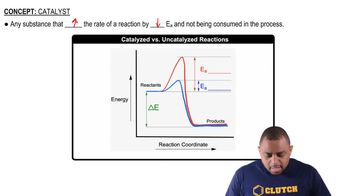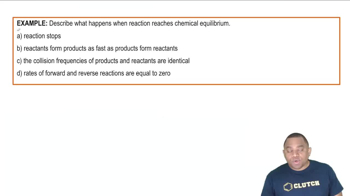Here are the essential concepts you must grasp in order to answer the question correctly.
Catalysts
A catalyst is a substance that increases the rate of a chemical reaction without being consumed in the process. It works by providing an alternative reaction pathway with a lower activation energy, allowing more reactant molecules to collide with sufficient energy to react. This means that even at lower temperatures, reactions can proceed more quickly when a catalyst is present.
Recommended video:
Catalyzed vs. Uncatalyzed Reactions
Reaction Rate
The reaction rate refers to the speed at which reactants are converted into products in a chemical reaction. It can be influenced by several factors, including concentration, temperature, and the presence of a catalyst. Understanding how these factors affect the reaction rate is crucial for predicting how changes in conditions will impact the overall progress of a reaction.
Recommended video:
Equilibrium and Dynamic Processes
In a chemical reaction, equilibrium is reached when the rate of the forward reaction equals the rate of the reverse reaction, resulting in constant concentrations of reactants and products. The addition of a catalyst does not change the position of equilibrium; it only accelerates the time taken to reach that equilibrium. This concept is essential for understanding how catalysts influence reaction kinetics without altering the final outcome.
Recommended video:
Chemical Equilibrium Example





